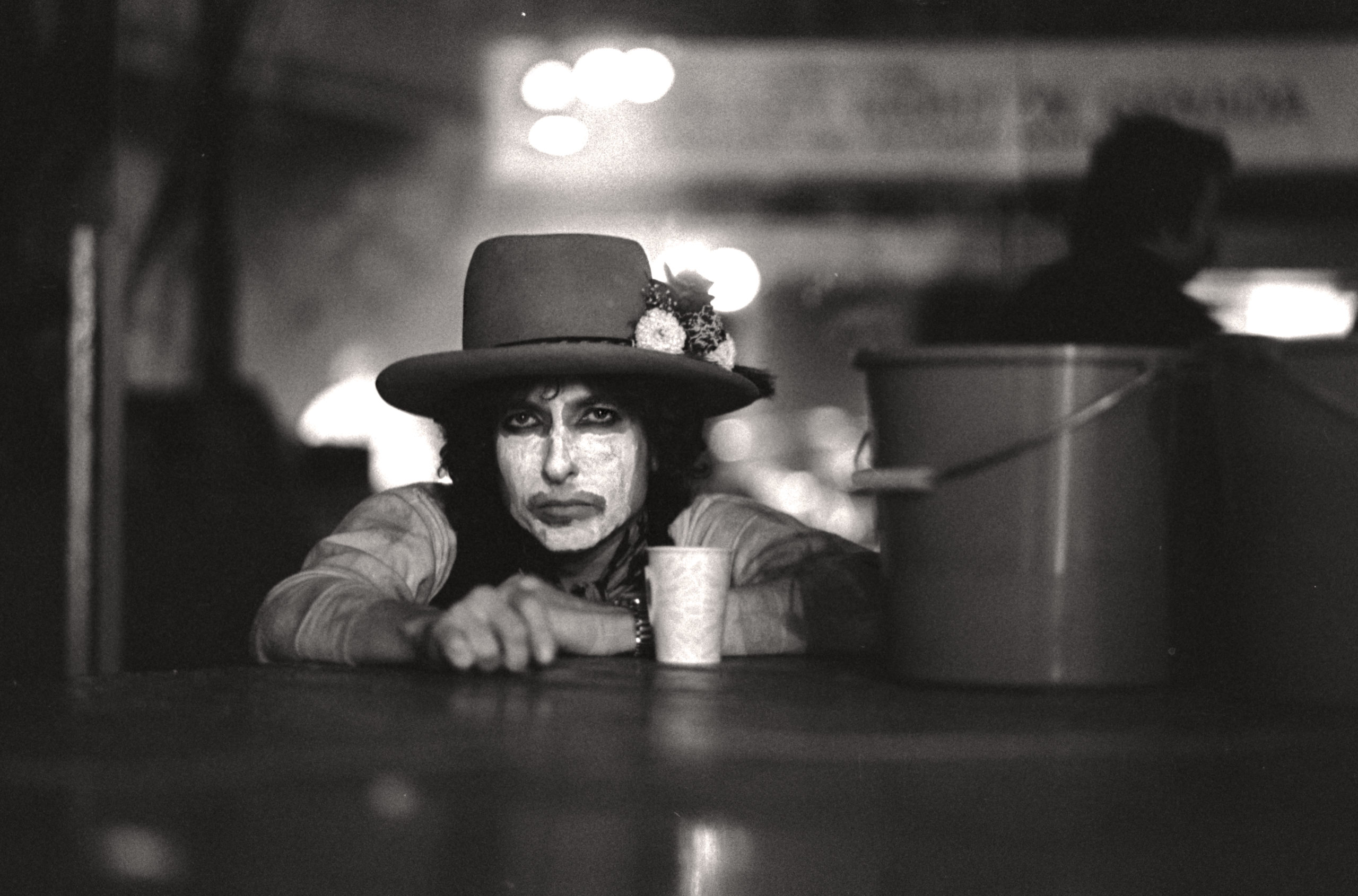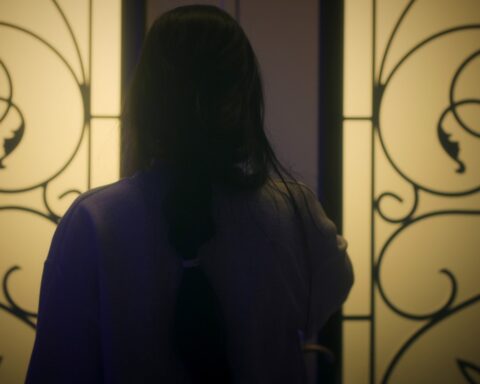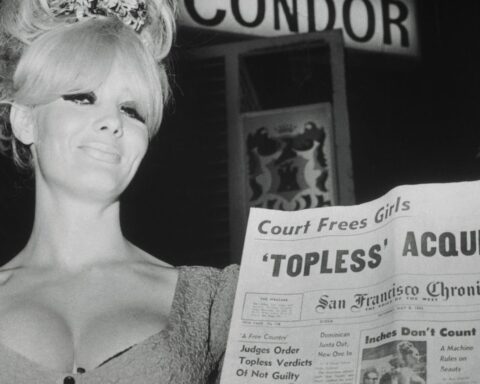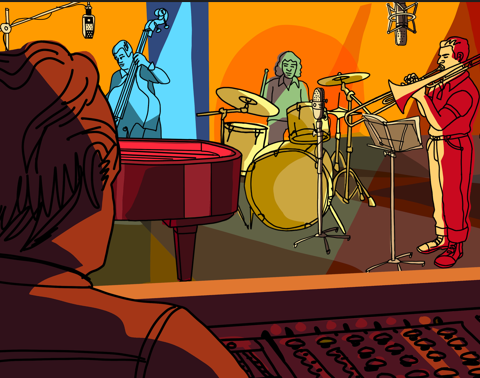Rolling Thunder Revue: A Bob Dylan Story by Martin Scorsese
(USA, 142 min.)
Dir. Martin Scorsese
“That tour was about nothing,” says Bob Dylan in Rolling Thunder Revue, “I don’t remember a thing about Rolling Thunder.”
If Dylan’s Rolling Thunder Revue was about nothing, then Martin Scorsese has made the Seinfeld of documentaries by chronicling it. Rolling Thunder Revue: A Bob Dylan Story by Martin Scorsese is at once about nothing and everything. It’s a rollickingly entertaining look back at an eclectic tour by one of the true artists who shaped music, yet the energy of the film comes not from Dylan’s tunes, but rather from the currents of change swirling throughout North America during the revue’s run.
A note of disclosure before we continue: I’ll admit to being the one of only critics at the film’s Toronto press screening who wasn’t alive when Dylan shook up his music with the Rolling Thunder Revue. Unlike several of the critics, I wasn’t there to see it in 1975. But I wasn’t alive for the moon landing and I liked Apollo 11 and I didn’t have to see the girls scream at Paul Anka in person to appreciate Lonely Boy. I respect the memories that some viewers bring to this film, while others go in with a relatively blank slate and others recall it through a patchy haze because they saw the show on acid. Approaching Rolling Thunder Revue primarily as a Scorsese fan who appreciates Dylan’s music, I loved every minute of the film’s phantasmagorical and kaleidoscopic assessment of a tour that clearly means a lot for music buffs.
Scorsese knows he’s making this Netflix film for an audience that’s at once extremely niche and incredibly broad. That’s why all 142 sprawling minutes of the doc fly by with a whir as it puts Dylan and his music in conversation with an America that was taking stock of itself following the war in Vietnam, Watergate, and the nation’s looming bicentennial. The film revisits the 1975 concert tour/travelling circus that brought Dylan back on the road after a long hiatus from performing. Scorsese presents the Rolling Thunder Revue through a series of lenses that range from clear-eyed memories, looks back through rose-coloured glasses, and hazy memories from nights tinged with LSD.
The gist of the tour is that it featured Dylan on the road with a cavalcade of performers including Joan Baez, Ronee Blakely, sword-wielding violinist Scarlet Rivera, Joni Mitchell, Ramblin’ Jack Elliott, and beat poet Allen Ginsberg (until they gave him the boot). The film shows how the star’s performances during the tour refused to give audiences a Dylan they recognized. The archival footage presents a reinvention as Dylan performs his songs with no fidelity to their recorded sounds, inventing a new musical syntax by screeching out the tunes with performative flair.
Dylan, in his first on camera interview in over a decade, reflects upon the tour and generally gives the kind of rambling, pretentious, or poetic non-answers that one sees him float to beleaguered journalists in the archival footage. There’s something humble about his conversation as he acknowledges that the tour was a commercial failure, but his assertion that it was an artistic success seems apt given how Scorsese frames it as an event that captured the pulse of America in a pivotal era. Dylan’s interview mostly adds to the aura of myth surrounding the Rolling Thunder Revue.
While the interview with Dylan might attract viewers to Scorsese’s film, the golden material is the archival footage. Some meticulously restored footage, shot by David Ayers, Howard Alk, Paul Goldsmith and Michael Levin, gives audiences a taste of Dylan’s energetic performances during Rolling Thunder Revue as he took the stage in heavy white make-up. (Apparently, because KISS did it and he thought it looked cool.) Scorsese and editor David Tedeschi present many of Dylan’s song performances in their entirety to give audiences the full effect of being in the modestly sized venues of the Revue’s run. One can see why this unique experience remains significant for the people who were actually present.
Scorsese isn’t making a concert film, however, and Rolling Thunder Revue is in many ways the movie that the Aretha Franklin doc Amazing Grace, great as it is, failed to be by limiting its scope to Franklin’s performance. Scorsese weaves a musical tapestry that connects Dylan to the greater currents of change, both inside the arts scene and outside on the streets of America. There are great nuggets like a performance by a young Patti Smith in a dumpy pub and conversations with diverse Americans about Dylan, Vietnam, and the nation’s future. The archival footage is especially great when it shows Dylan off stage, drawing inspiration from the people he visits or reflecting on the road that brought him here, like a thoughtful trip with Allen Ginsberg to see Jack Kerouac’s grave or a jam session at Gordon Lightfoot’s house where Joni Mitchell plays her new song, “Coyote.”
As Rolling Thunder Revue unpacks the significance of the tour and Dylan’s music, Scorsese plays up the element of myth by inviting a chorus of talking heads to reflect about the experience in freewheeling interviews. Joan Baez talks about her love for performing with Dylan, while the archival footage of their duets throws more heat than Bradley Cooper crooning with Lady Gaga at the Oscars. Ruben “Hurricane” Carter, in perhaps the film’s best chapter, speaks about Dylan’s interest in his case and the song that helped set him free. Sharon Stone pops up intermittently as she recalls begrudgingly accompanying her mother to the Revue only to noticed by Dylan, who invited to go along with the tour as a roadie. The film has all sorts of anecdotes like Stone’s story that sound too good or coincidental to be true, and as soon as Michael Murphy pops up as Jack Tanner, his character from Robert Altman’s Tanner ’88, who reminisces about seeing the tour with Jimmy Carter, it becomes clear that Scorsese probably isn’t fact-checking these interviews. The mythical legend of the tour is what matters.
Within the liberties and elements of outright fiction blended seamlessly and playfully throughout the film, a greater essay on memory emerges. Rolling Thunder Revue marks Scorsese’s third documentary with Dylan after The Last Waltz (1978) and No Direction Home (2003), and it’s arguably the deepest he’s probed a subject in one of his non-fiction films. An ambitious and sprawling musical odyssey, it’s a reinvention of sorts for Scorsese just as the Rolling Thunder Revue was for Dylan. It’s everything one wants a great music documentary to be as gives audiences an unforgettable concert, but also unpacks the stories that make the music so legendary. As a Bob Dylan film, it lets audiences experience his unique tour, but as a Martin Scorsese picture, it’s one hell of a movie.
Rolling Thunder Revue: A Bob Dylan Story by Martin Scorsese opens in Toronto at TIFF Lightbox on June 11 and debuts on Netflix June 12.











